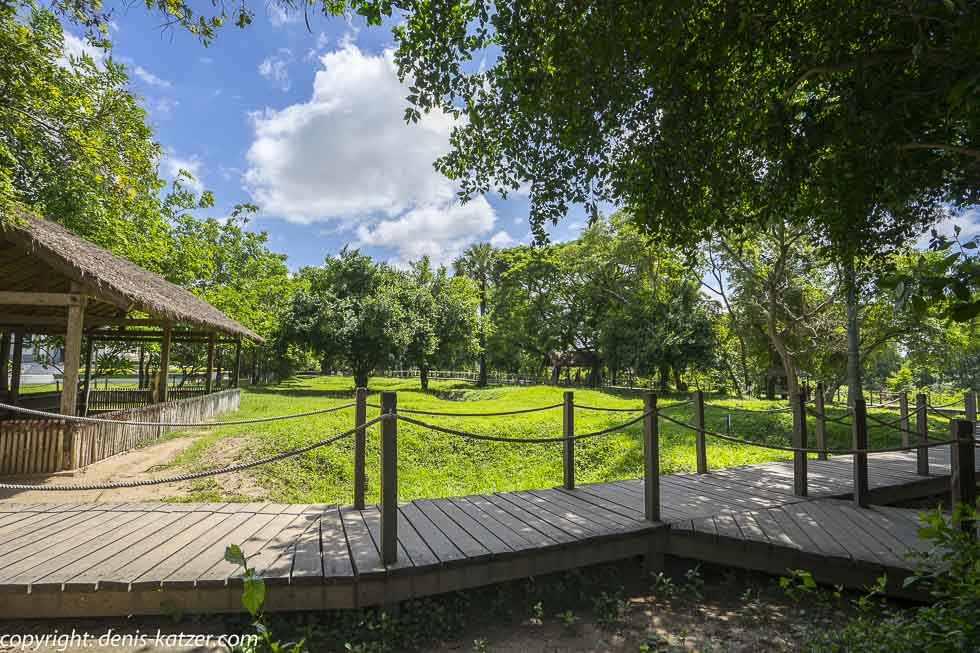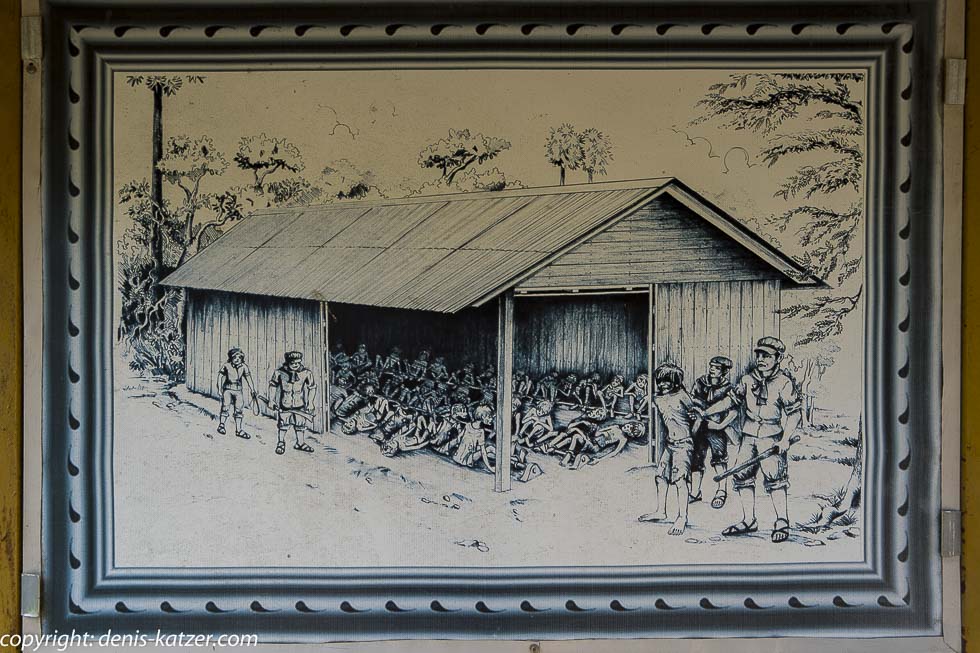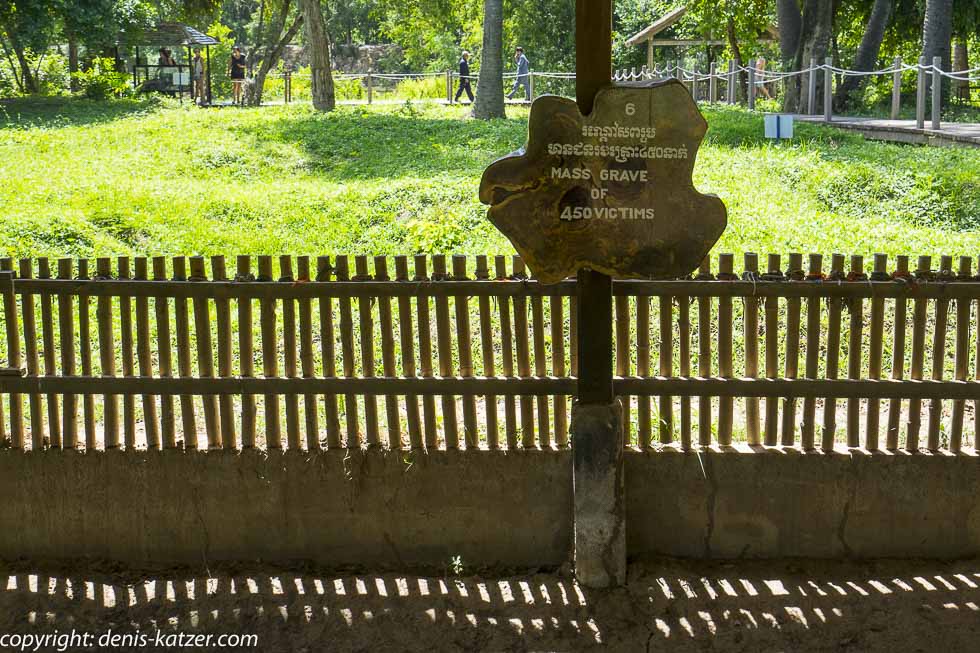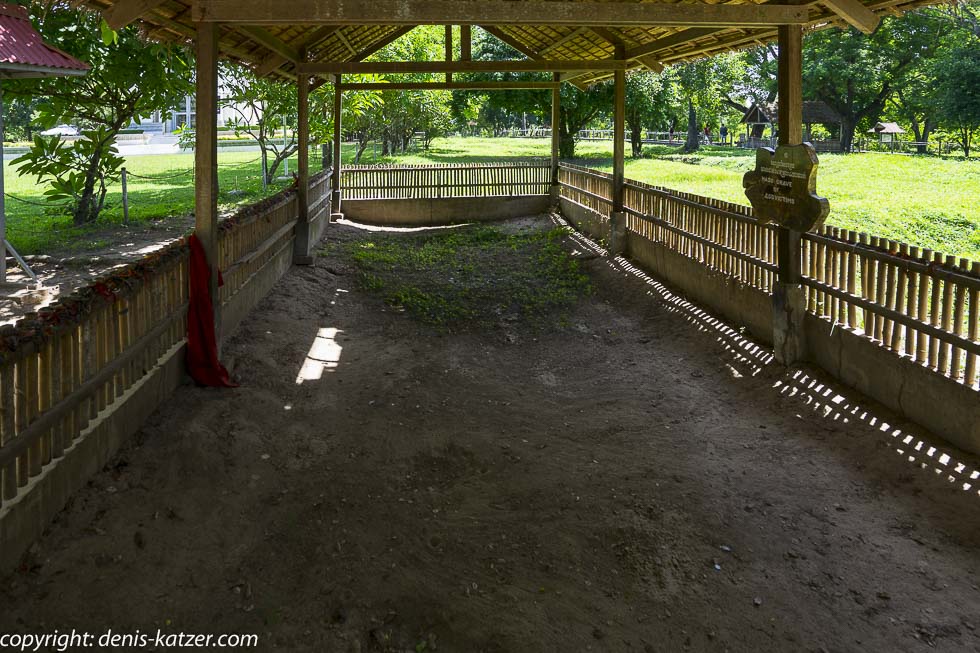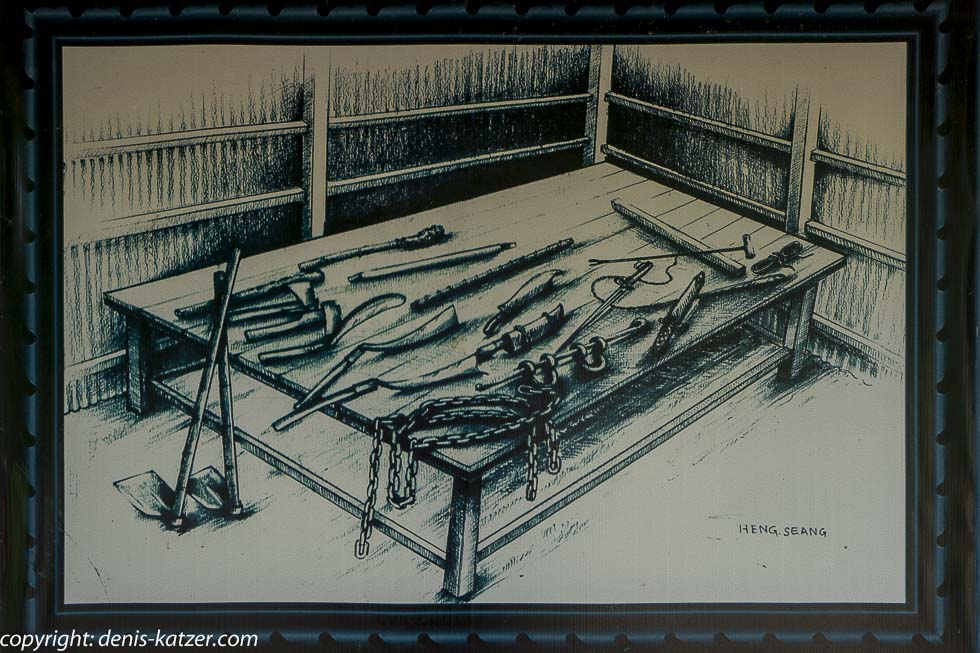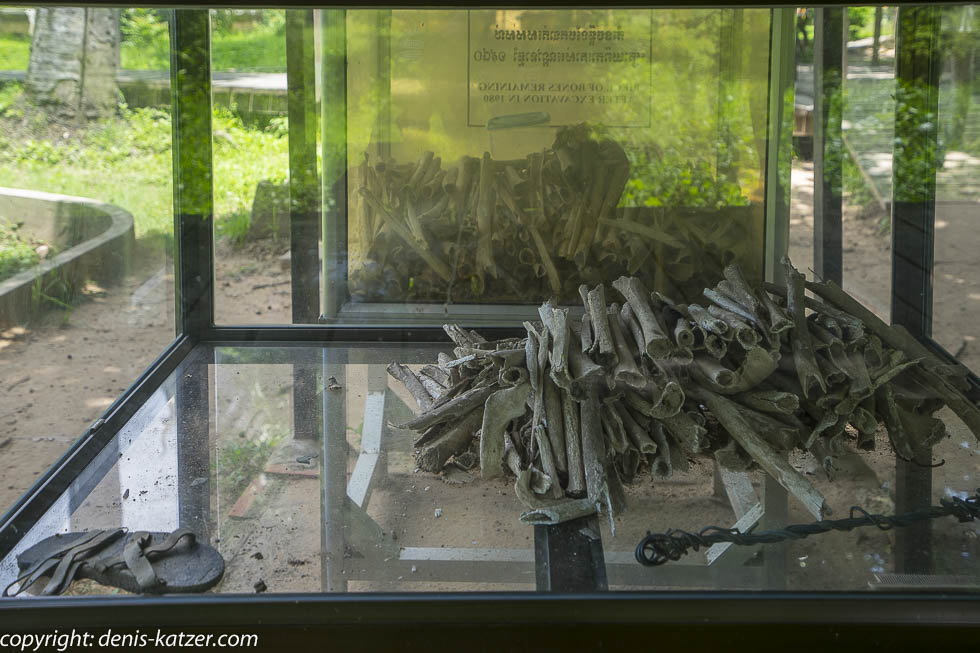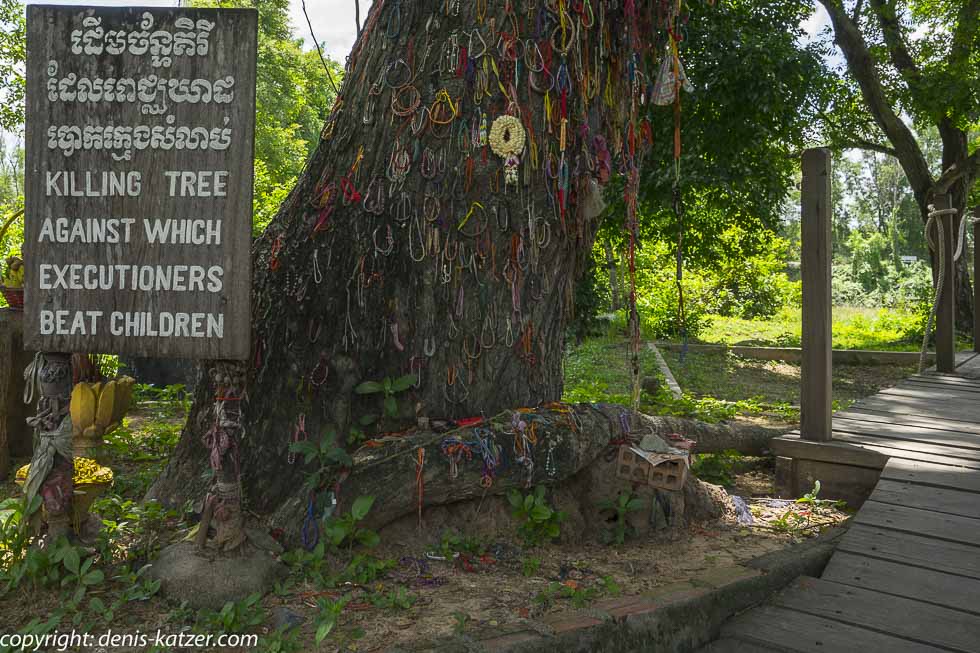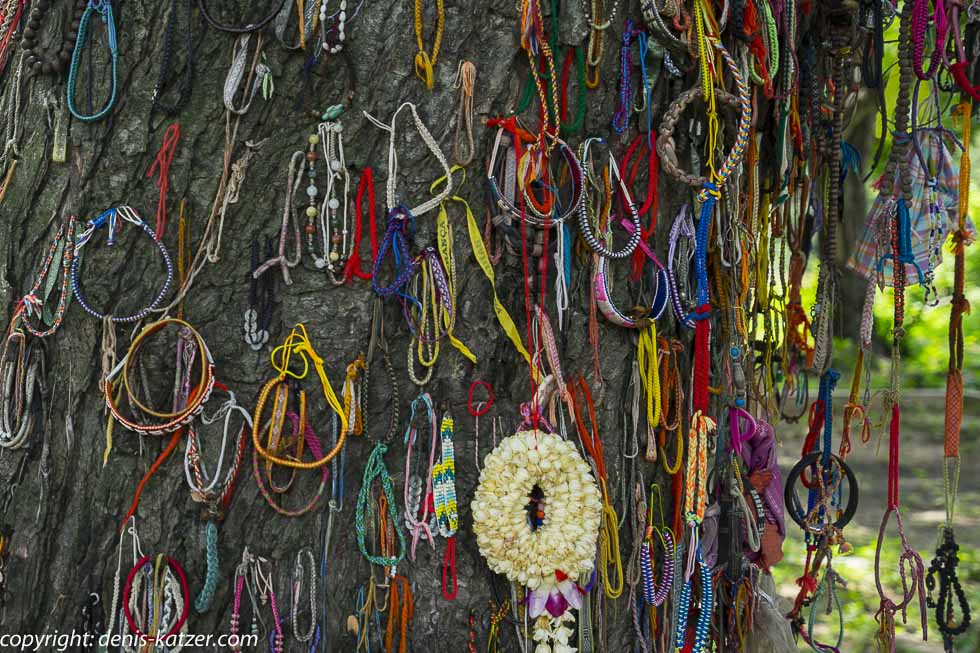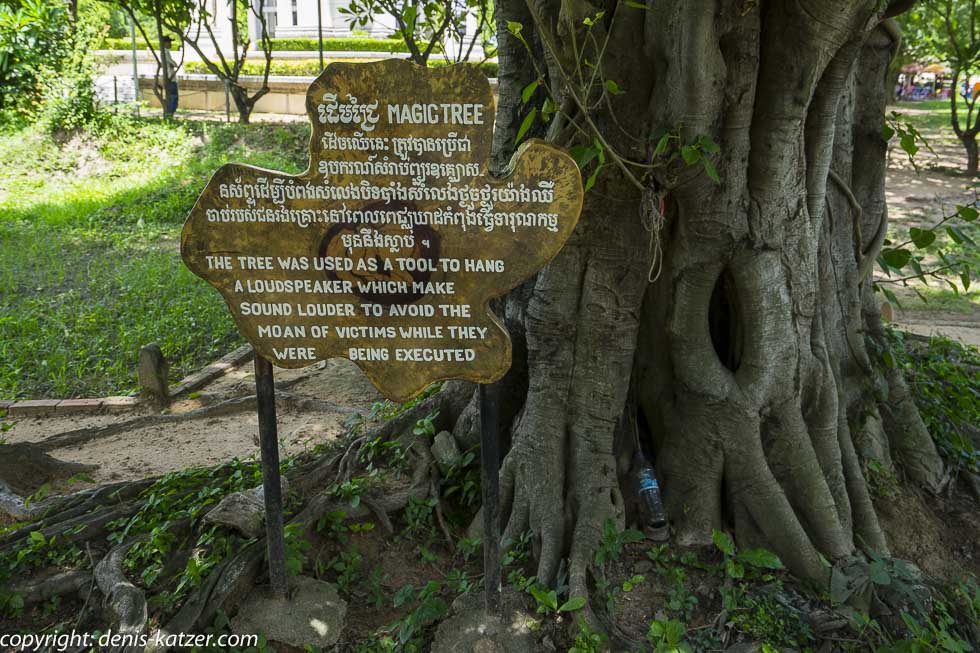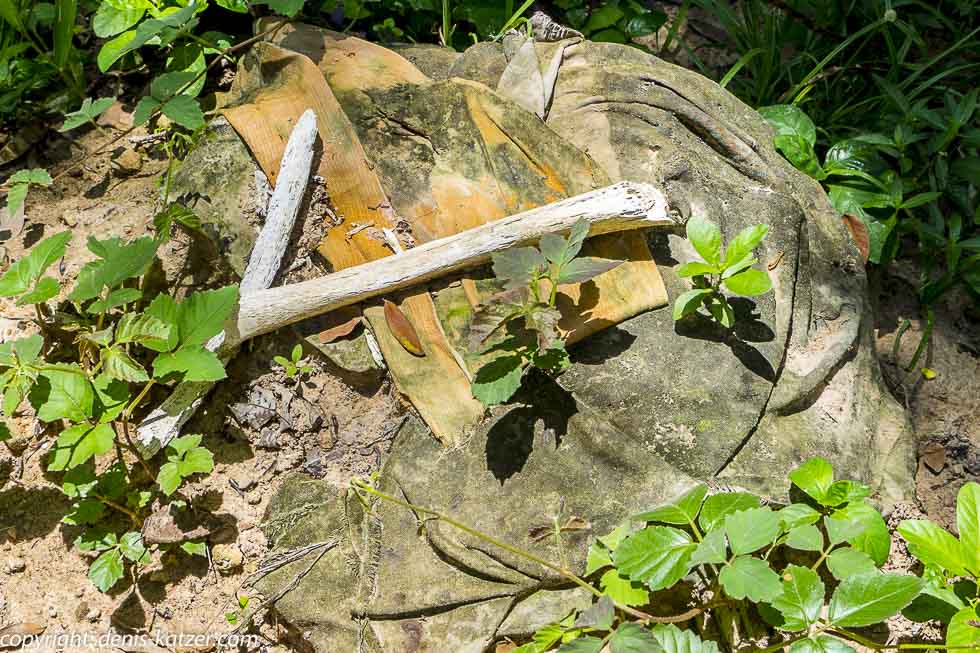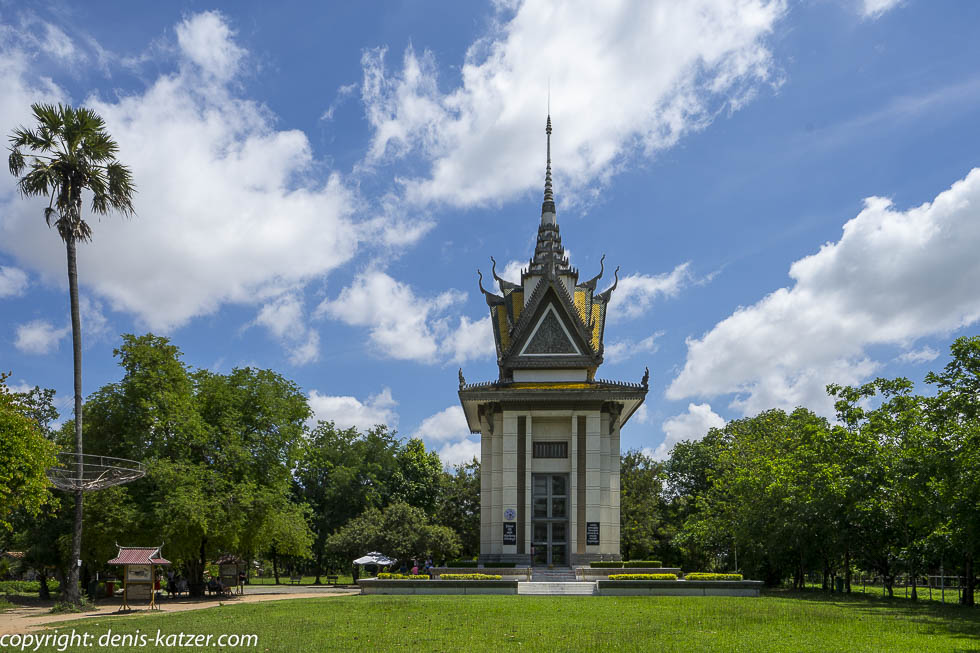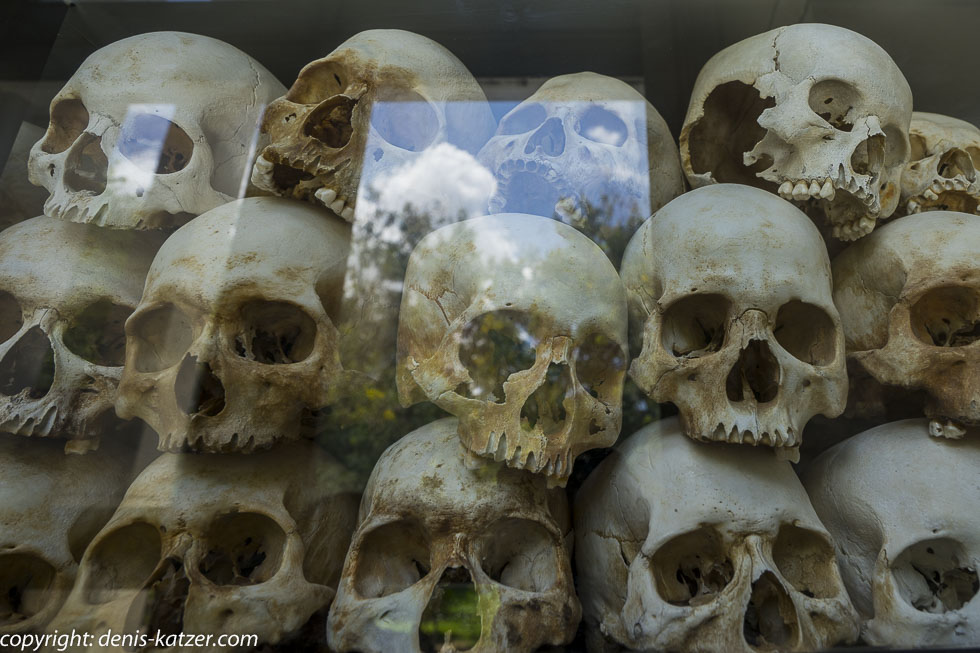
Killing Fields
N 11°35'03.4'' E 104°55'52.1''
Date:
31.05.2017 until 02.06.2017
Day: 701 – 703
Country:
Cambodia
Location:
Phnom Penh
Latitude N:
11°34’03.4”
Longitude E:
104°55’52.1”
Daily kilometers:
40 km
Total kilometers:
23,937 km
Maximum height:
10 m
Total altitude meters:
71.177 m
Sunrise:
05:35 h
Sunset:
6:20 pm
Temperature day max:
35°C
(Photos of the diary entry can be found at the end of the text).
Tears run down my cheeks and I struggle to suppress a loud sob. Tanja and I sit in the shade of a tree, looking over mass graves from which bones and pieces of clothing stick out, washed free by the monsoon rains and collected every few months by the staff of the memorial. “There were at least 300 such Killing Fields during the Khmer Rouge regime that ruled Cambodia between 1975 and 1979. It was led by Pol Pot (real name Soloth Sar), who at the end of his life ranked among the ten worst mass murderers in human history,” continues the sober voice of our audio guide. “The politically motivated mass murder, under the leadership and orders of Pol Pot, cost the lives of at least 200,000 people. With a total of two to three million Cambodians, almost a third of the population fell victim to the barbaric regime. Here in Choeung Ek alone, 17,000 people were killed in the most brutal manner. In order to save valuable ammunition, they were beaten to death or stabbed with iron bars, axes, clubs and other objects. The entire family was wiped out so that none of their relatives could ever take revenge on the butchers. Children had no chance of survival either, even babies were beaten against a tree trunk until they were dead.” Tanja and I are standing in front of the tree with the hair and remains of babies’ skulls still stuck to the bark years after the massacre. “I feel sick,” I say quietly, looking at Tanja, who is staring petrified at the old tree, which, if it could speak, would tell of the infinite human suffering.
The audio voice asks us to move on and explains that loudspeakers were installed in the branches of another tree, from which revolutionary songs blared from dawn to dusk to drown out the screams of the dying, so that the many people waiting in a simple wooden hut would not be aware of their imminent death.
“The Pol Pot regime legitimized the mass murder of its own population in order to destroy the existing social structure. The aim was to create the conditions for establishing an egalitarian society along Maoist lines. This regime was referred to in the Western world as Stone Age communism.” We learn that in the beginning it was mainly civil servants, intellectuals and Buddhist nuns and monks who were tortured and slaughtered in hundreds of extermination camps because they allegedly offered resistance, were denigrated by someone or simply belonged to the bourgeoisie. It was enough if you wore glasses, spoke a foreign language or studied abroad. In the end, the slightest education was enough to be executed.
“Look,” I say in a shaky voice, pointing to a few bones sticking out of the ground right in front of us. Next to it we recognize a trouser leg and a cloth belt that the memorial staff have not yet cleared away. The voice in our headphones continues to speak incessantly, or terribly sad stories are played from the few survivors of the creepy place. The lump in our throats gets bigger and although it’s been 38 years since this terrible slaughter, I think I can feel the unspeakable suffering physically. My mind races and I realize at that moment that this mass murder happened in my lifetime. Just before my first trip to Asia. As if paralyzed, we walk silently past mass graves that have been dug up, into which D.D.T. is poured on those who are still alive in order to prevent any epidemics from breaking out or to kill the still twitching bodies for good.
Suddenly we are standing in front of the memorial stupa. The audio voice offers us to step inside, but warns us of the sight to come. Tanja and I look at each other and agree to go in. Hundreds or thousands of skulls of babies, children, women and men are piled on top of each other on many floors and seem to scream at every visitor from their empty eye sockets. My brain switched off quite a while ago, otherwise I would have collapsed here at the latest. Fortunately, I don’t know at this point that things will get even worse that day. We can’t imagine how the experiences of this morning could possibly be enhanced, so we take a rickshaw to the infamous S21, a former school that was used as a torture center during the Khmer Rouge era. As the hot, humid, dusty wind blows around my ears, I ask myself why we are doing this to ourselves at all? My thoughts are spinning, seeming to roll over under what I have just experienced. Is it right to ignore a country’s past? Should we only look at the good things so as not to burden ourselves with negative events? But in this case, do you really get to know what makes a country tick? How it breathes? Do you know why people live the way they do? Doesn’t the past also shape the present? Absolutely, and since we want to feel a country, to smell and taste it, to understand the people, it makes more than sense to look at and listen to at least a few of the unpleasant historical events. Perhaps also to report on it in order to help prevent such a super-crime from happening again, because the ostrich policy has never helped anyone…
If you would like to find out more about our adventures, you can find our books under this link.
The live coverage is supported by the companies Gesat GmbH: www.gesat.com and roda computer GmbH http://roda-computer.com/ The satellite telephone Explorer 300 from Gesat and the rugged notebook Pegasus RP9 from Roda are the pillars of the transmission.

